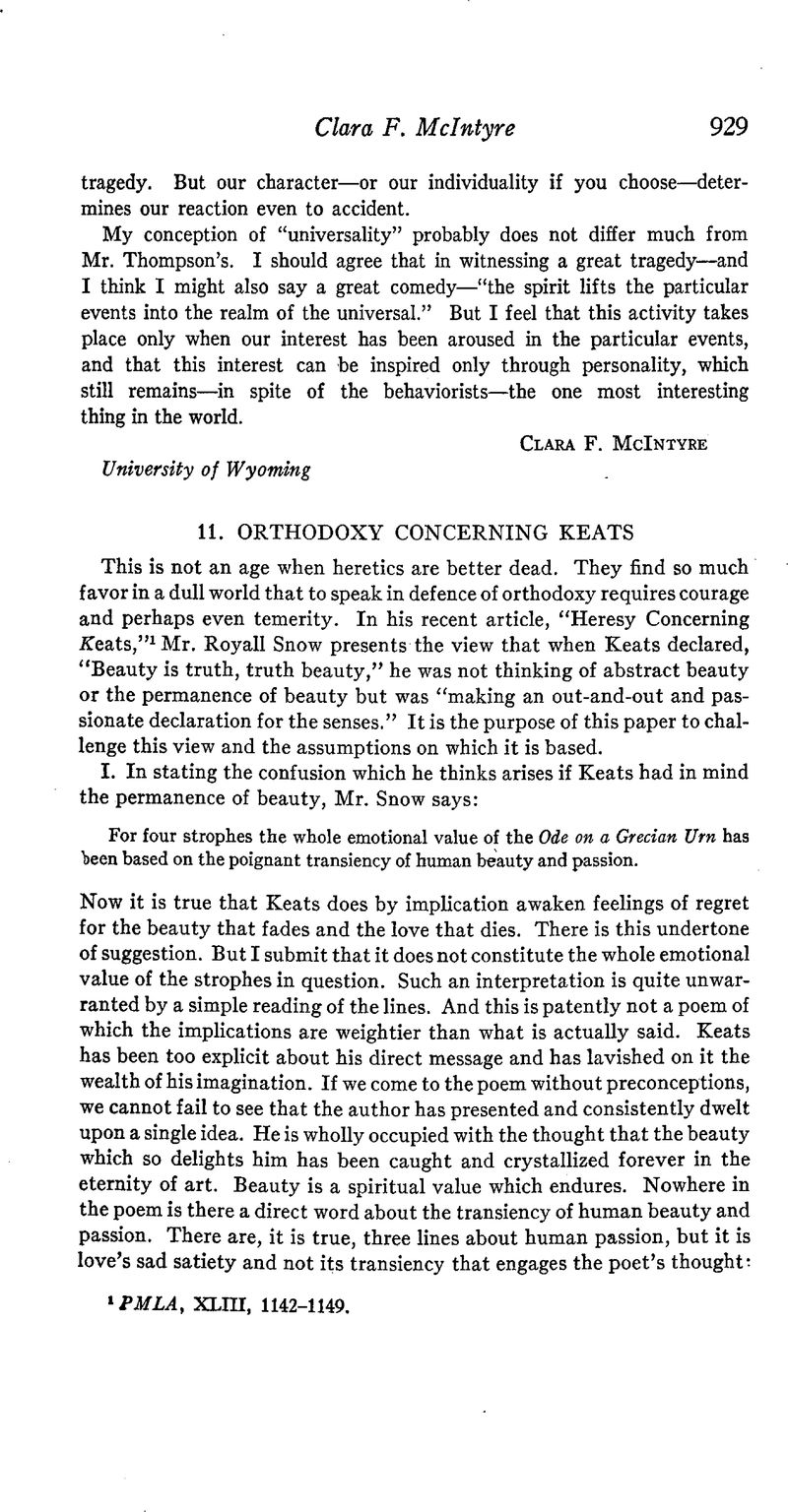Article contents
Orthodoxy Concerning Keats
Published online by Cambridge University Press: 02 December 2020
Abstract

- Type
- Comment and Criticism
- Information
- Copyright
- Copyright © Modern Language Association of America, 1929
References
Note 1 in page 929 PMLA, XLIII, 1142-1149.
Note 2 in page 931 The Poems of John Keats, Everyman ed., Introd. p. xx.
Note 3 in page 931 Quoted by Amy Lowell, John Keats, II, 91.
Note 4 in page 932 PMLA, XLIII, 1143.
Note 5 in page 932 Ibid., p. 1148.
Note 6 in page 933 “She dwells with Beauty—Beauty that must die,” Ode on Melancholy. This is the point at which Miss Lowell and Mr. Garrod find the odes contradictory. But there is no contradiction, for the context shows that Keats is here thinking of the physical beauty of woman, the mistress referred to in the preceding strophe. In the Grecian Urn, he is thinking of something much less specific, something which may with strong reason be interpreted as abstract beauty.
Note 7 in page 933 For this light on the aesthetic experience I am indebted to Prof Mervyn J. Bailey of Boston University. I take pleasure in acknowledging this.
- 1
- Cited by


